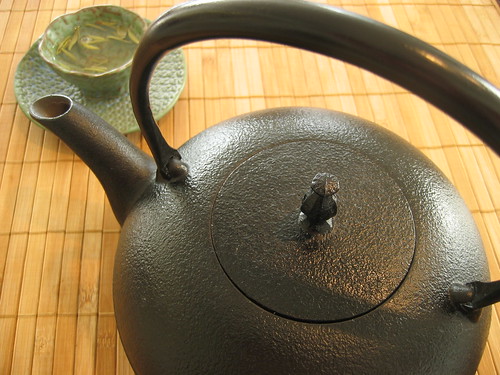Prior to my move from Japan back to the U.S. there were a few necessities that I felt I could just not leave without. Quintessential Japanese items:
A string of pearls (every girl needs a good set of pearls, right?)
A kimono (a casual summer one, but beautiful nonetheless, complete with obi and geta)
A few nice sets of hashi (chopsticks) to go with the rest of my Japanese tableware
My antique kotatsu
And finally, a good tetsubin
Tetsubin are traditional cast iron teapots. The craft of cast iron, known as nambu-tekki, has been in practice in the northern prefecture of Iwate for over 400 years. There are 64 to 68 steps in the traditional production process of cast iron. Many of these steps are still done by hand and are strictly monitored by a master craftsman known as a kamashi. A minimum of 15 years is required to become a nambu-tekki craftsman, and 30-40 years to become a kamashi. That's some serious cast iron skill!
I wanted an authentic artisan-crafted teapot, one that had passed the discerning gaze of a kamashi, so I hopped on the next shinkansen (bullet train) and headed north. I walked from factory to factory; it was the search for my Holy Grail of teapots. Amongst the various sizes, shapes and designs I found my beauty. My Zen-like simple, unadorned teapot. I rode the slow train home, enjoying the mountainous views, with my little cast iron teapot resting heavily on my lap.












Comments
March 2, 2008
Your search for the tea pot really paid off, as the beauty of the pot shows thru on the photo.
December 4, 2008
We have one - also a beauty. Purchased in Morioka. Those I have seen in tea shops have a coating inside and ours does not - can it still be used?
December 4, 2008
Ours isn't coated inside either, which is fine. Go ahead and use it. You just get more iron in your diet! :)